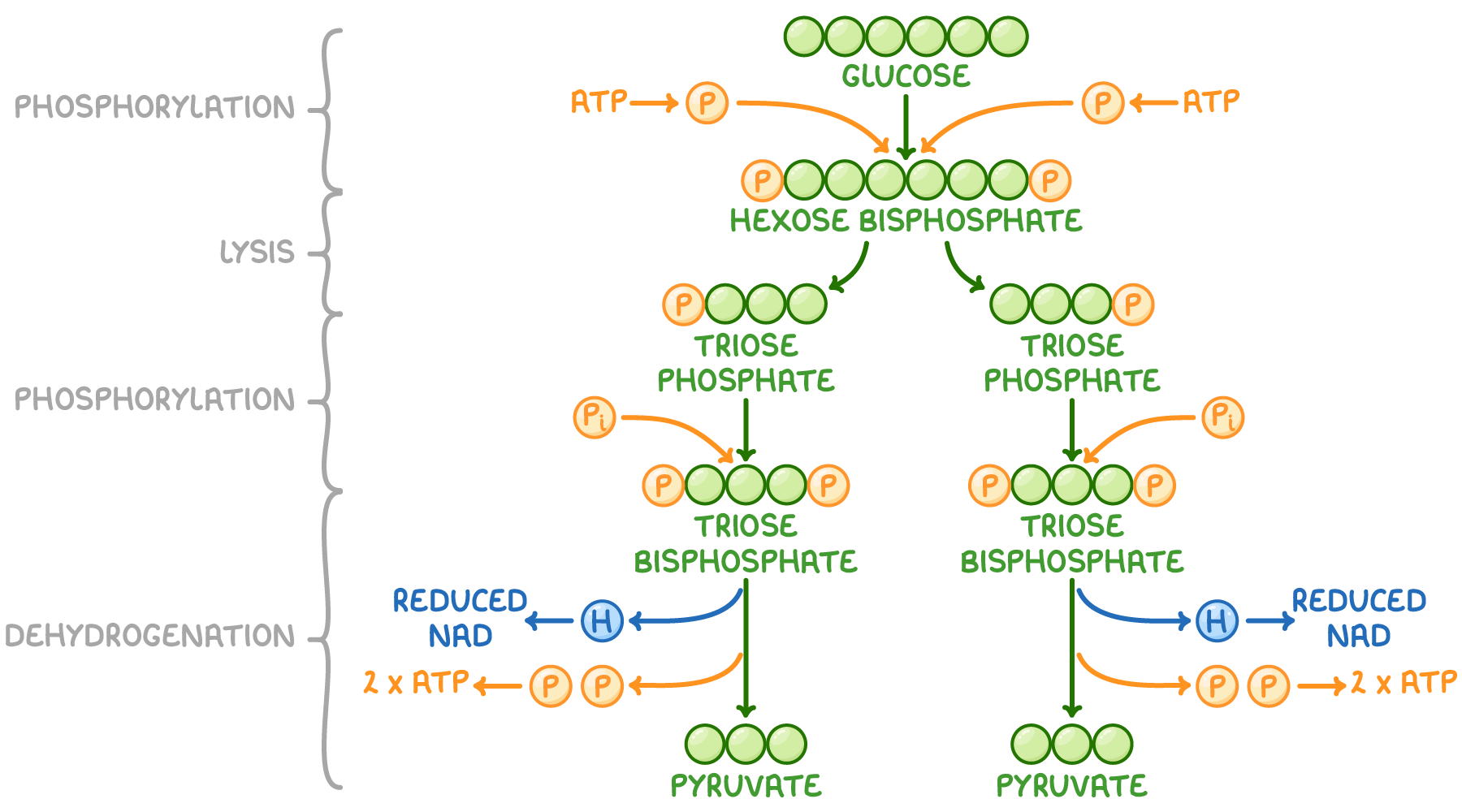Glycolysis: The First Step in Cellular Respiration
- Glycolysis breaks down one molecule of glucose (6C) into two molecules of pyruvate (3C).
- It occurs in the cytoplasm and does not require oxygen, making it an anaerobic process.
- It produces a small amount of ATP and NADH, which are used in later stages of cellular respiration.
Glycolysis
The metabolic pathway that breaks down one molecule of glucose (6C) into two molecules of pyruvate (3C), producing a net gain of 2 ATP and 2 NADH. It occurs in the cytoplasm and does not require oxygen.
Each step in glycolysis is catalyzed by a specific enzyme, ensuring the process is efficient and tightly regulated.
Step-by-Step of Glycolysis
Glycolysis involves a series of enzyme-catalyzed reactions that can be divided into four key stages.

Stage 1: Phosphorylation (Energy Investment)
Phosphorylation
Phosphorylation refers to the addition of a phosphate group to a molecule
- Glucose is phosphorylated, meaning a phosphate group is added to it.
- The enzyme hexokinase adds the first phosphate, forming glucose-6-phosphate.
- A second phosphate is added in a subsequent step, forming fructose-1,6-bisphosphate.
- This requires 2 ATP to be used (energy investment).
- Adding phosphate groups makes glucose more reactive and traps it inside the cell (phosphorylated glucose can't cross the membrane).
- Think of it as "priming" the molecule for breakdown.
Stage 2: Lysis (Splitting the Sugar)
- The 6-carbon sugar (fructose-1,6-bisphosphate) is split into two 3-carbon molecules called triose phosphates.
- Each triose phosphate is converted into glyceraldehyde-3-phosphate (G3P).
- Imagine cutting a log into smaller pieces before burning it for energy.
- Lysis is like chopping the glucose molecule into manageable parts.
From this point forward, every reaction happens twice per glucose, once for each G3P molecule.



